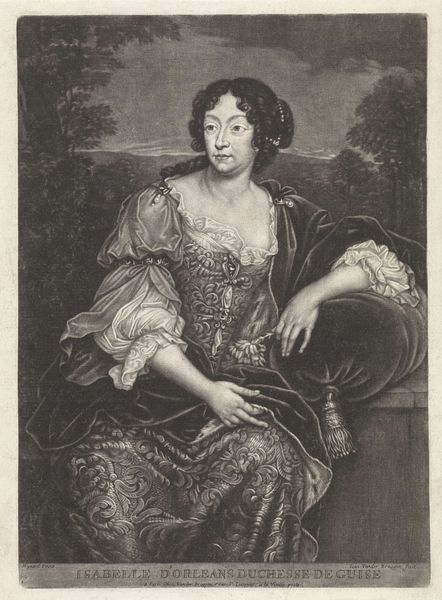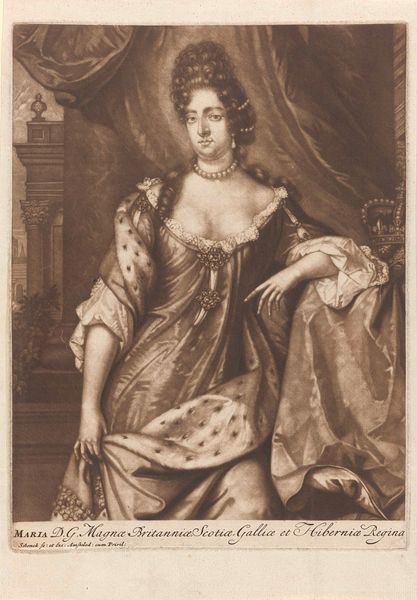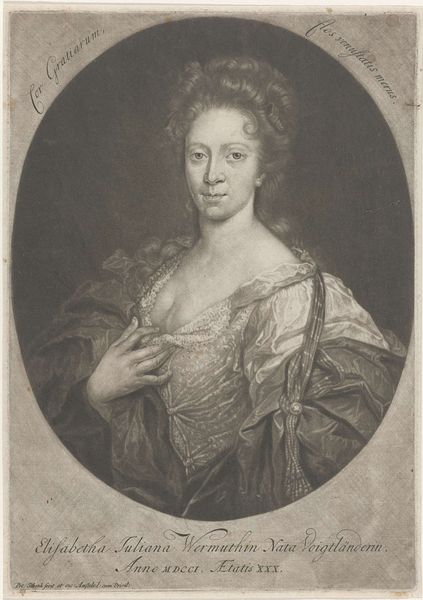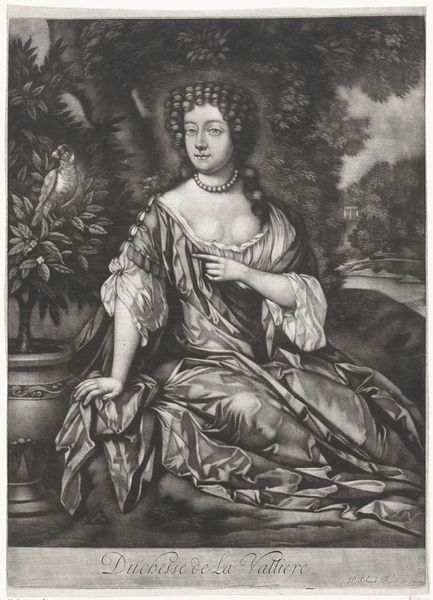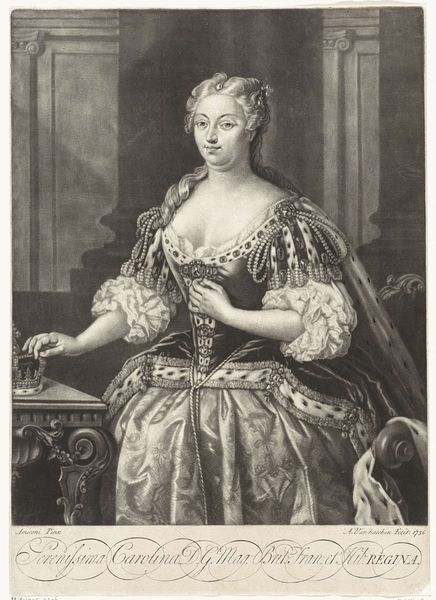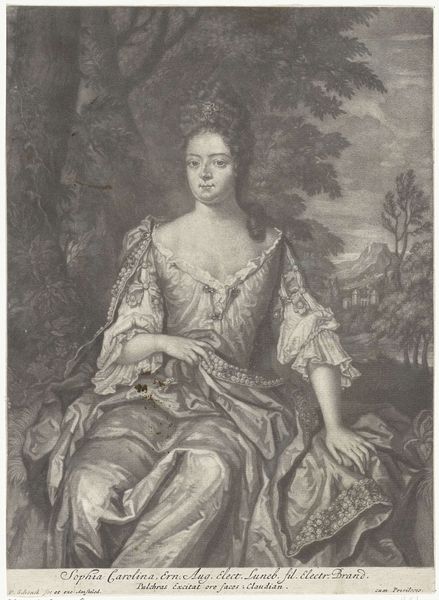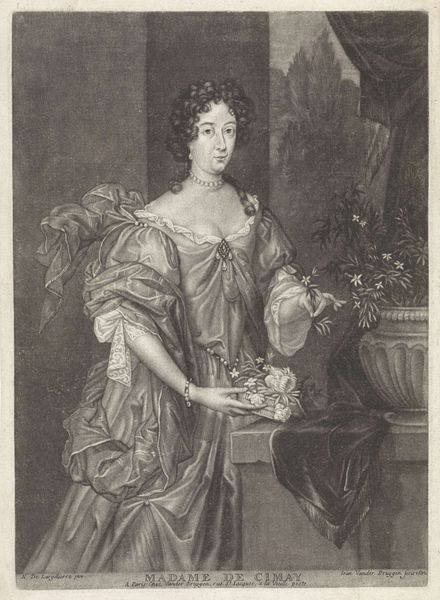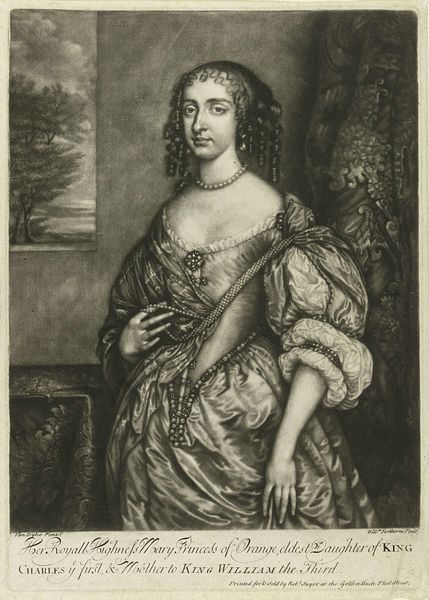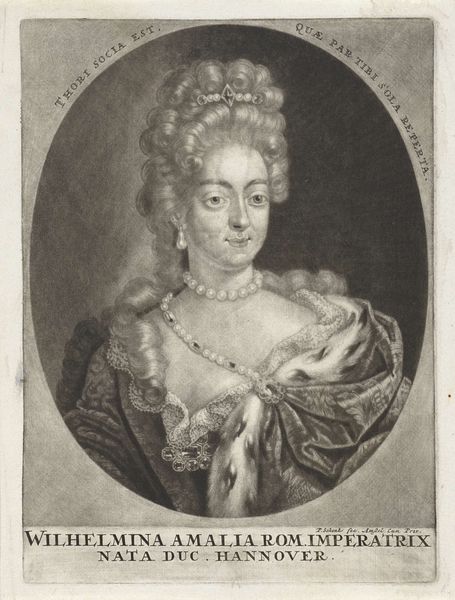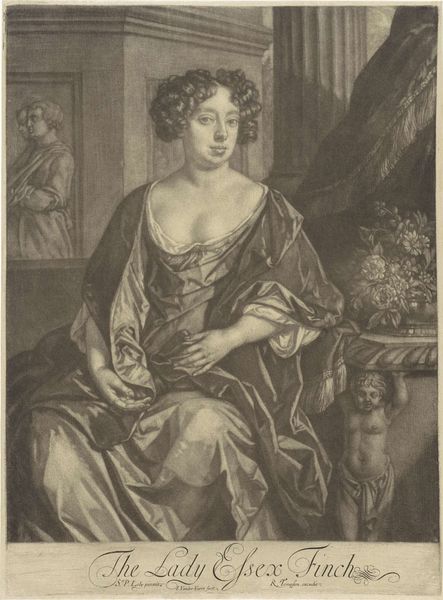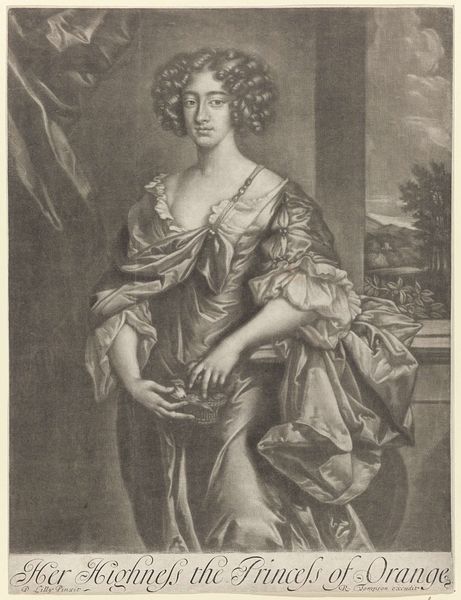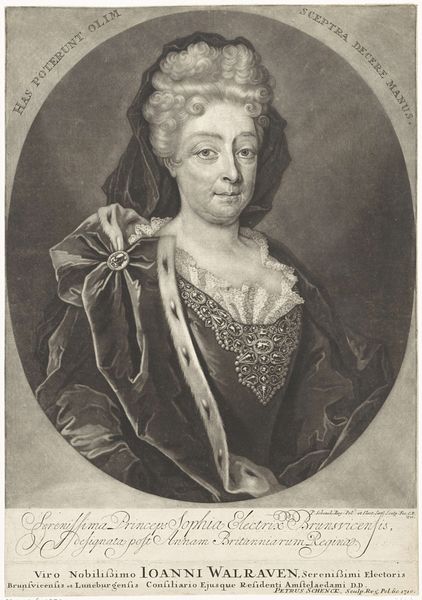
print, engraving
#
portrait
#
baroque
# print
#
engraving
Dimensions: height 255 mm, width 174 mm
Copyright: Rijks Museum: Open Domain
Editor: This is a portrait of Charlotta Sophia, Princess of Courland, by Pieter Schenk, dating from 1670 to 1713. It’s an engraving, which gives it a unique textural quality. It strikes me as both opulent and perhaps a bit…stiff. What do you see in this piece? Curator: I see the intense labor embedded in its creation. Consider the socio-economic factors enabling Schenk to create such an intricate engraving. The availability of materials, the skilled labor involved – all indicators of a complex network of production and consumption. How does this relate to the portrayed princess, herself a product of dynastic power structures? Editor: That's interesting; I hadn’t considered the labor behind it. I was focusing more on the subject and the symbols of wealth like the pearls or the shiny dress. Curator: But even those elements—pearls, textiles—represent global trade routes and extraction processes fueled by human labor, often exploitative. Where do these materials come from, and at whose expense were they acquired and transformed into objects of status? What message does the work's materiality send to the viewer? Editor: So, looking at the engraving process itself becomes a way to understand broader social and economic power dynamics? Curator: Precisely. It's not merely an image of royalty, but evidence of a sophisticated system of production and distribution dependent on access to raw materials and a specialized workforce. By examining the materials, tools, and the conditions of their use, we understand the culture that shaped the image, not just the other way around. Editor: That’s a very different way of thinking about it. I usually think of art as reflecting culture, but this is about art being *made* by the culture too. Thanks, I have a lot to reflect on!
Comments
No comments
Be the first to comment and join the conversation on the ultimate creative platform.
